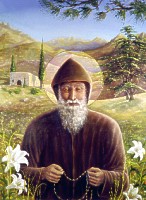As I read and learned more I found out that there is a very good reason for not doing these two things during the Our Father. It's in conflict with the prescribed rubrics of the Mass.
For a good explanation see these two articles on EWTN.
Orans Posture ("Praying" Hands Extended)
Holding Hands at Mass
The Orans Posture
Holding HandsIn the rubrics the Orans gesture is asked principally of the Main Celebrant, but on those occasions where either a priestly action is done (Eucharistic Prayer) or prayer in common (Our Father) all the concelebrants do it.
It is never done by the Deacon, who does not represent the People before God but assists him who does.
Among the laity this practice began with the charismatic renewal. Used in private prayer it has worked its way into the Liturgy. It is a legitimate gesture to use when praying, as history shows, however, it is a private gesture when used in the Mass and in some cases conflicts with the system of signs which the rubrics are intended to protect. The Mass is not a private or merely human ceremony. The symbology of the actions, including such gestures, is definite and precise, and reflects the sacramental character of the Church's prayer. As the Holy See has recently pointed out, confusion has entered the Church about the hierarchical nature of her worship, and this gesture certainly contributes to that confusion when it conflicts with the ordered sign language of the Mass.
1) It is an inappropriate "sign," since Communion is the sign of intimacy. Thus, a gesture of intimacy is introduced both before the sign of reconciliation (the Sign of Peace), but more importantly, before Holy Communion, the sacramental sign of communion/intimacy within the People of God.
2) It is introduced on personal initiative. The Holy See has authority over the liturgy according to Vatican II's "Constitution on the Sacred Liturgy" #22 and canon 838 of the Code of Canon Law.
So there you have it. If you are a hand-holder or use the Orans posture during the Our Father and ever find yourself standing next to me during Mass do not be alarmed or offended that I do not participate. I am simply trying to follow the rubrics of the Mass as prescribed by the Holy See.






No comments:
Post a Comment